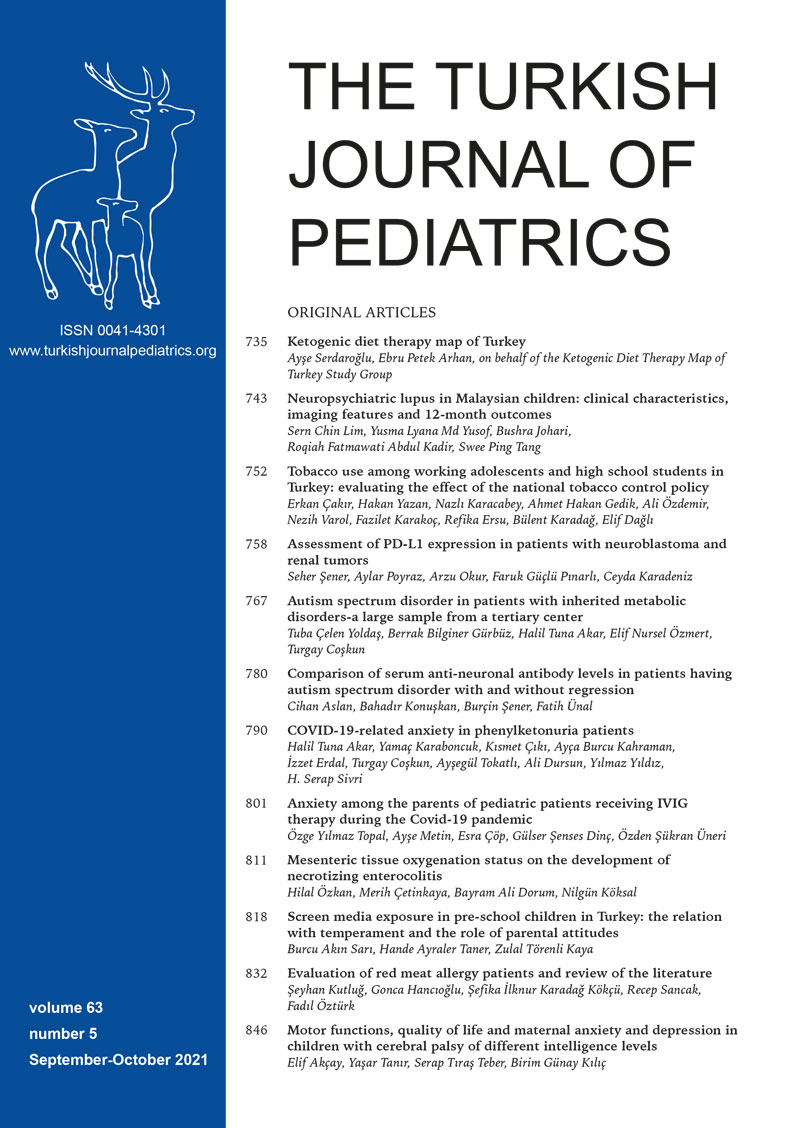Abstract
Background. It was reported that prevalence of red meat allergy in children was higher in our country than in western populations. However, the diagnosis of these patients is often delayed. The aim of the study was to present the clinical and laboratory characteristics of our red meat allergy patients.
Methods. The data were collected retrospectively from the files of children with red meat allergy. Also, 6 adults with red meat allergies were recorded in the families of the children. Patients with symptoms associated with red meat allergy and sensitive to beef or mutton in prick-to-prick tests were recorded.
Results. The median age of the 43 patients was 12 years (2-37), and 51% were male. Most of the patients were children (n=37, 86%). The median age was 10 years in children (2-17), and 54% were male. All of the children had dermatologic manifestations, 51% had respiratory symptoms, and 64% had anaphylaxis upon exposure to red meat. The anaphylaxis history was not associated with demographic, clinical and laboratory data. A total of 63% children had additional allergic diseases, and 75% of them were sensitive to both mutton and beef in prickto- prick tests. The median total IgE level of the children was 327 (20-3550) IU/mL, median eosinophil count was 210/mm < sup > 3 < /sup > (40-990) and mean vitamin D was 13.1 ± 1.2 mcg/L (n=27). Anaphylaxis occurred in 3 of 9 patients who received the open oral food challenge (OFC) test. After OFC, 3 patients continued to eat red meat without issues, and 1 patient was recommended to eat alternatives to red meat.
Conclusions. Clinical and laboratory findings were heterogeneous in children with red meat allergy. Anaphylaxis risk seems to be higher than other food allergies. OFC test is more helpful in both diagnosis and alternative red meat selection compared to laboratory findings.
Keywords: anaphylaxis, children, food allergy, oral food challenge, red meat allergy
Copyright and license
Copyright © 2021 The Author(s). This is an open access article distributed under the Creative Commons Attribution License (CC BY), which permits unrestricted use, distribution, and reproduction in any medium or format, provided the original work is properly cited.














